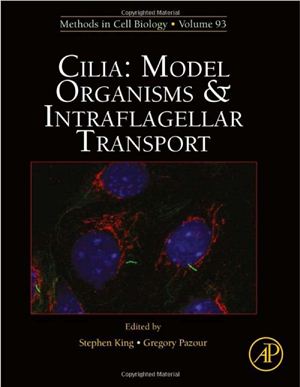Academic Press, Elsevier, 2009, 330 pages
Methods in Cell Biology
Cilia are highly conserved organelles that serve motile functions, sensory functions, or both. These organelles power cell movement, generate fluid flow in various organs, act as sensors of the extracellular environment and have been modified for various specialized tasks such as light reception and smell. Defects in these ubiquitous organelles lead to a broad array of human genetic disorders that range from polycystic kidney disease, retinal degeneration, epilepsy and infertility to developmental defects such as situs inversus and polydactyly. This volume is the third in a three-part series on cilia that focuses on the use of model organisms to gain insight into ciliary function and on the process of intraflagellar transport (IFT) that is essential for the assembly and maintenance of ciliary structures.
Includes both classic and state-of-the-art methods readily adaptable across model systems, and designed to last the test of time
Covers forward and reverse genetic analysis of IFT and bochemical methods to define the role of IFT components
Methods presented cover molecular, genetic, and biochemical approaches to ciliary function in model organisms
Methods in Cell Biology
Cilia are highly conserved organelles that serve motile functions, sensory functions, or both. These organelles power cell movement, generate fluid flow in various organs, act as sensors of the extracellular environment and have been modified for various specialized tasks such as light reception and smell. Defects in these ubiquitous organelles lead to a broad array of human genetic disorders that range from polycystic kidney disease, retinal degeneration, epilepsy and infertility to developmental defects such as situs inversus and polydactyly. This volume is the third in a three-part series on cilia that focuses on the use of model organisms to gain insight into ciliary function and on the process of intraflagellar transport (IFT) that is essential for the assembly and maintenance of ciliary structures.
Includes both classic and state-of-the-art methods readily adaptable across model systems, and designed to last the test of time
Covers forward and reverse genetic analysis of IFT and bochemical methods to define the role of IFT components
Methods presented cover molecular, genetic, and biochemical approaches to ciliary function in model organisms

